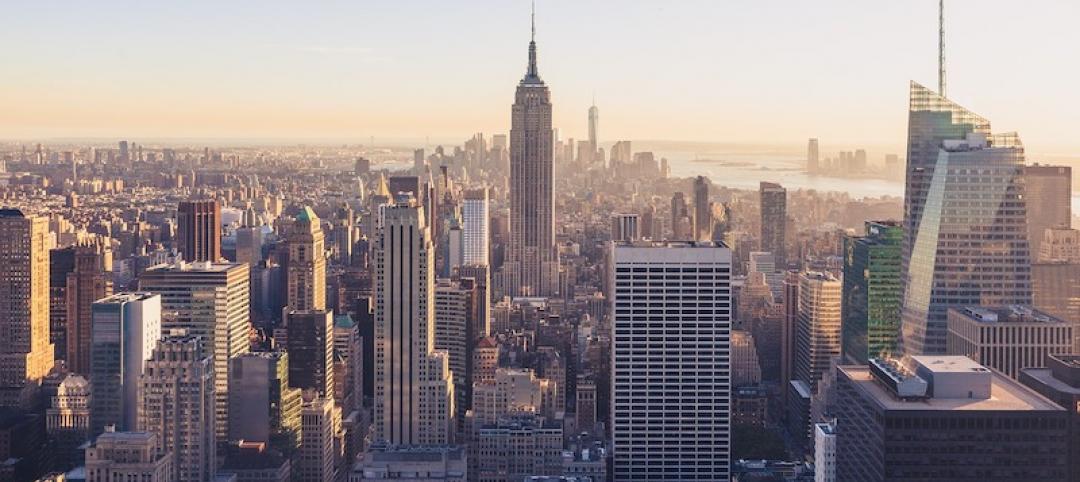I’ve been going to trade shows for more than 35 years, and it never ceases to amaze me how many suppliers I’ve never heard of. While there are always well-known brands on display, like Kohler and
Whirlpool, marketing strategies for most suppliers typically view the general public as an afterthought.
The relevance of brand recognition has always been debatable in the B2B universe. With notable exceptions like BASF, few manufacturers or industry groups see value in generating top-of-mind awareness for their products and services with consumers. It’s far more advantageous, their thinking goes, to aim at municipalities, developers, and their AEC partners.
“It’s not in their organizational DNA” to market to the public, observes Kimberly Jones, President of Butler/Till, a media planning firm.
But the public isn’t a passive bystander anymore. It is an avid stakeholder insisting that its input be factored into the design and construction of all kinds of projects: schools, offices, hospitals, multifamily housing, even sports arenas. Marketing that relegates the public to the sidelines misses an opportunity to influence—even tangentially—these influencers.
I was thinking about branding while standing on the periphery of the International WELL Building Institute’s booth at last month’s Greenbuild convention in Los Angeles, watching one of a steady stream of interviews with company execs and partners, presented to Greenbuild attendees. IWBI, which launched in 2013, is striving to create a brand. But for whom, I wondered?
Its WELL Building Standard stems from a larger wellness movement being spurred by a public that is demanding healthier home and work environments. But certification programs that measure and grade buildings and products have been mostly indifferent about propagating their brands.
The EPA’s Energy Star program, which has been around for 24 years, gained purchase as energy rates rose. But EPA’s WaterSense labeling program, which celebrates its 10th anniversary this year, has yet to muster that level of brand awareness, in part, because water is relatively inexpensive in most markets.
The WaterSense label is on 16,000+ product models. Through 2015, it has helped consumers reduce energy and water costs by $32.6 billion. Yet, fewer than one-quarter of Americans are aware of the brand, according to a GfK survey.
My guess is that the same is true, to a greater or lesser degree, of LEED, Green Globes, Cradle to Cradle, and other regimens that hold buildings and products accountable for their efficiency, sustainability, or healthiness. Imagine the marketing boost for manufacturers and builders if these certification programs more broadly impacted consumers’ decisions about what to buy or where to live and work?
The Cradle to Cradle label is on nearly 6,000 products under 400-plus corporate certificates. Those products include many consumer brands, from Shaw Industries (flooring) to Method (soap). The Cradle to Cradle organization is confident that the brand means something to “knowledgeable consumers” (read: Millennials), says Stacy Glass, the group’s VP of Built Environment.
But any consumer branding campaign would be futile without critical mass. “What I’d like to see is our label on one million products under 10,000 certificates across the built environment,” says Glass.
Related Stories
Market Data | Feb 9, 2021
Construction Backlog and contractor optimism rise to start 2021, according to ABC member survey
Despite the monthly uptick, backlog is 0.9 months lower than in January 2020.
Market Data | Feb 9, 2021
USGBC top 10 states for LEED in 2020
The Top 10 States for LEED green building is based on gross square feet of certified space per person using 2010 U.S. Census data and includes commercial and institutional projects certified in 2020.
Market Data | Feb 8, 2021
Construction employment stalls in January with unemployment rate of 9.4%
New measures threaten to undermine recovery.
Market Data | Feb 4, 2021
Construction employment declined in 2020 in majority of metro areas
Houston-The Woodlands-Sugar Land and Brockton-Bridgewater-Easton, Mass. have worst 2020 losses, while Indianapolis-Carmel-Anderson, Ind. and Walla Walla, Wash. register largest gains in industry jobs.
Market Data | Feb 3, 2021
Construction spending diverges in December with slump in private nonresidential sector, mixed public work, and boom in homebuilding
Demand for nonresidential construction and public works will decline amid ongoing pandemic concerns.
Market Data | Feb 1, 2021
The New York City market is back on top and leads the U.S. hotel construction pipeline
New York City has the greatest number of projects under construction with 108 projects/19,439 rooms.
Market Data | Jan 29, 2021
Multifamily housing construction outlook soars in late 2020
Exceeds pre-COVID levels, reaching highest mark since 1st quarter 2018.
Market Data | Jan 29, 2021
The U.S. hotel construction pipeline stands at 5,216 projects/650,222 rooms at year-end 2020
At the end of Q4 ‘20, projects currently under construction stand at 1,487 projects/199,700 rooms.
Multifamily Housing | Jan 27, 2021
2021 multifamily housing outlook: Dallas, Miami, D.C., will lead apartment completions
In its latest outlook report for the multifamily rental market, Yardi Matrix outlined several reasons for hope for a solid recovery for the multifamily housing sector in 2021, especially during the second half of the year.
Market Data | Jan 26, 2021
Construction employment in December trails pre-pandemic levels in 34 states
Texas and Vermont have worst February-December losses while Virginia and Alabama add the most.

















